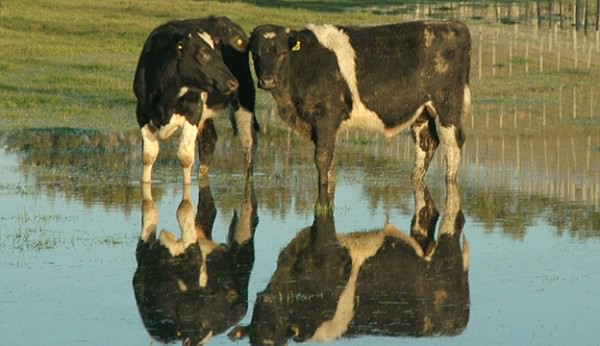
As cities down the East Coast continue working to restore electricity to their residents and families cope with the aftereffects of Hurricane Sandy, it’s important to remember that none of us, no matter where we live, are exempt from the possibility of a natural disaster. While it’s essential that you have an emergency plan in place on your farm in the event of a tornado, hurricane, fire or other natural disaster, you should also be prepared with information on how to handle the recovery process.
A number of disaster-recovery pamphlets are available from the American Red Cross, Federal Emergency Management Agency, cooperative-extension services, and other disaster relief organizations. As you assemble your emergency supplies and discuss your disaster plan with your family, also talk with them about what could happen post-disaster, so that you are prepared to deal with the situation when the time comes. Here are some things to keep in mind:
1. Staying Safe
Your No. 1 priority post-disaster is to keep you and your family safe. Avoid roads and sidewalks until given the nod from local officials. When you do venture out from a safe area, proceed with caution, being on the lookout for falling objects, like tree branches or roofs, and being aware of wildlife.
2. Returning Home
If you were evacuated from your home during a natural disaster, exercise caution before returning home. While it might be tempting to immediately enter the building and assess the damage, do not enter if you smell gas, if you see floodwaters around the building, or if a fire-damaged home has not been declared safe by authorities, warns FEMA in its “Recovering from Disaster” factsheet. When you are able to enter, take a battery-powered radio and flashlight with you, and be on the lookout for wild animals inside the house.
Take detailed notes of damages to your property, including to appliances, water and sewage systems, roof, foundation and chimney, and take pictures of the damage for your records. Immediately contact your insurance company with this information.
3. Assessing Mental and Physical Health
People often undergo physical or mental trauma during a disaster situation without realizing it. During this time, take care of yourself by eating well, drinking plenty of clean water and getting enough rest, advises the Center for Disease Control. Acknowledge your reaction to the event you just experienced, whether it’s sadness, grief, anger or another emotion, and seek help from a doctor, counselor or community organization if you find yourself having difficulty coping. Everyone deals with disaster in a different ways, but be aware of signs of stress or trauma—such as trouble sleeping or communicating; increased drug or alcohol use; headaches or stomach problems; or overwhelming fear, guilt or hopelessness—in yourself or other adults. The CDC provides a list of helplines you can call.
4. Talking with Children
It’s important to keep children updated on the natural disaster as it unfolds, as they can pick up on your emotions or fears and could hear about the event from another source. The University of New Hampshire Cooperative Extension recommends listening to your children’s concerns, acknowledging their feelings and providing age-appropriate answers to their questions. Also involve children in updating your family’s disaster plan and help them re-establish a routine post-disaster.
5. Helping the Injured
Helping others and assessing them for injury is often necessary during a widespread disaster. Prepare yourself ahead of time by taking first-aid, CPR and AED classes from your local American Red Cross chapter, so you can tend to victims until emergency responders arrive. Help victims maintain body temperature with blankets, and monitor their temperature so they don’t overheat. Do not move seriously injured or unconscious people, but if it is required due to potential danger, stabilize the neck and back first.
6. Recovering Animals
When it’s safe to do so, seek out your livestock, taking with you clean feed, water, a livestock first-aid kit and other tools, says the Texas AgriLife Extension. Assess all livestock for injuries (including snake bites), sickness (such as pneumonia), and internal and external parasites. Give them first-aid treatments as you’re able, but call your veterinarian regarding serious livestock injuries. Keep in mind you might be put on a veterinarian’s waiting list, so be patient and offer to give any help that you can. If you find any dead animals, try to dispose of them properly. Contact your local extension agent for the best way to do this in your area.
Feeding your animals clean dry, hay is ideal post-disaster, but at the very least, make sure the hay is clear of dirt and mold, even if it’s wet. Be aware that natural water sources, like ponds and streams, might not be safe for animals to drink after a storm, so be prepared to water them from a clean water source.




